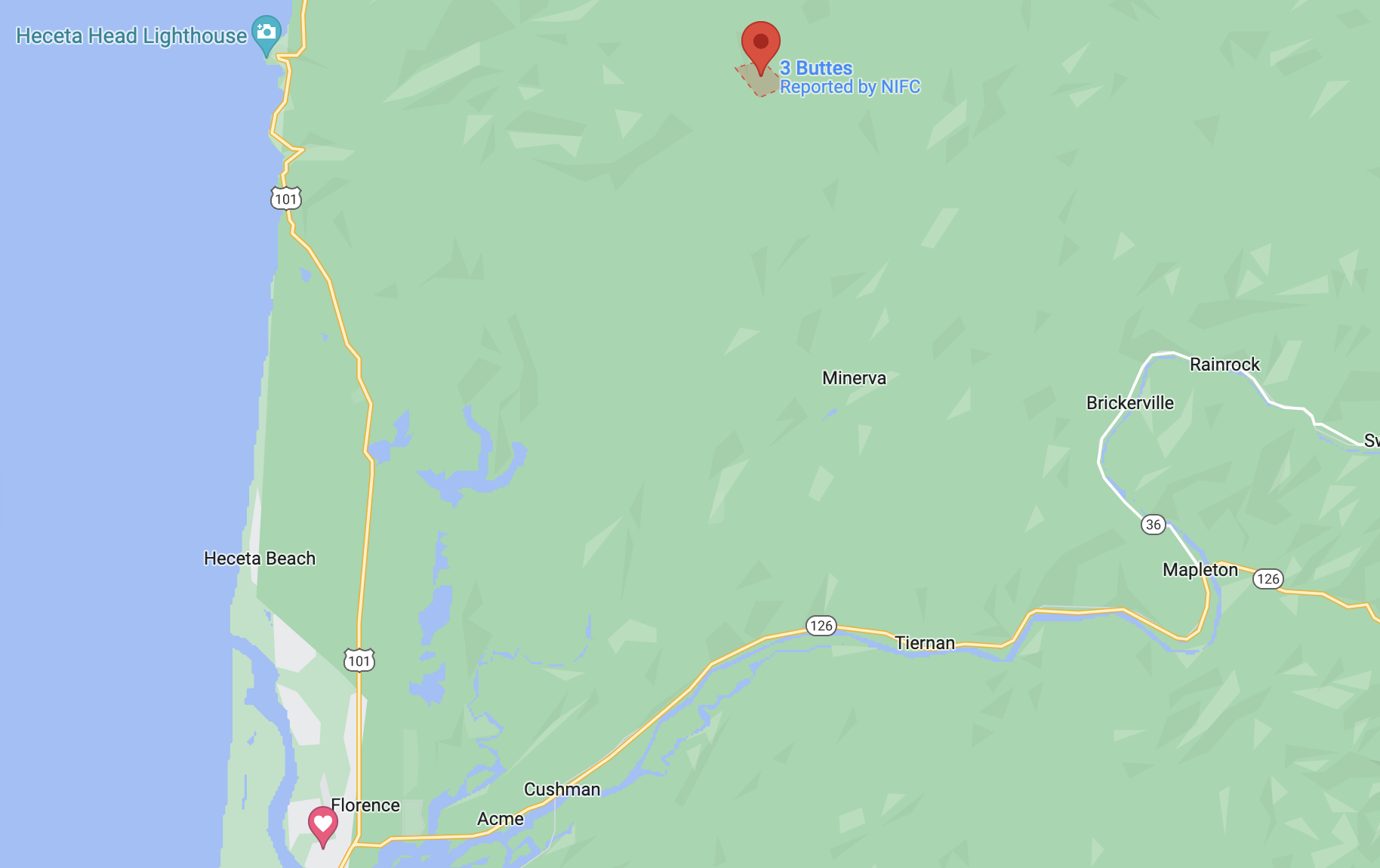
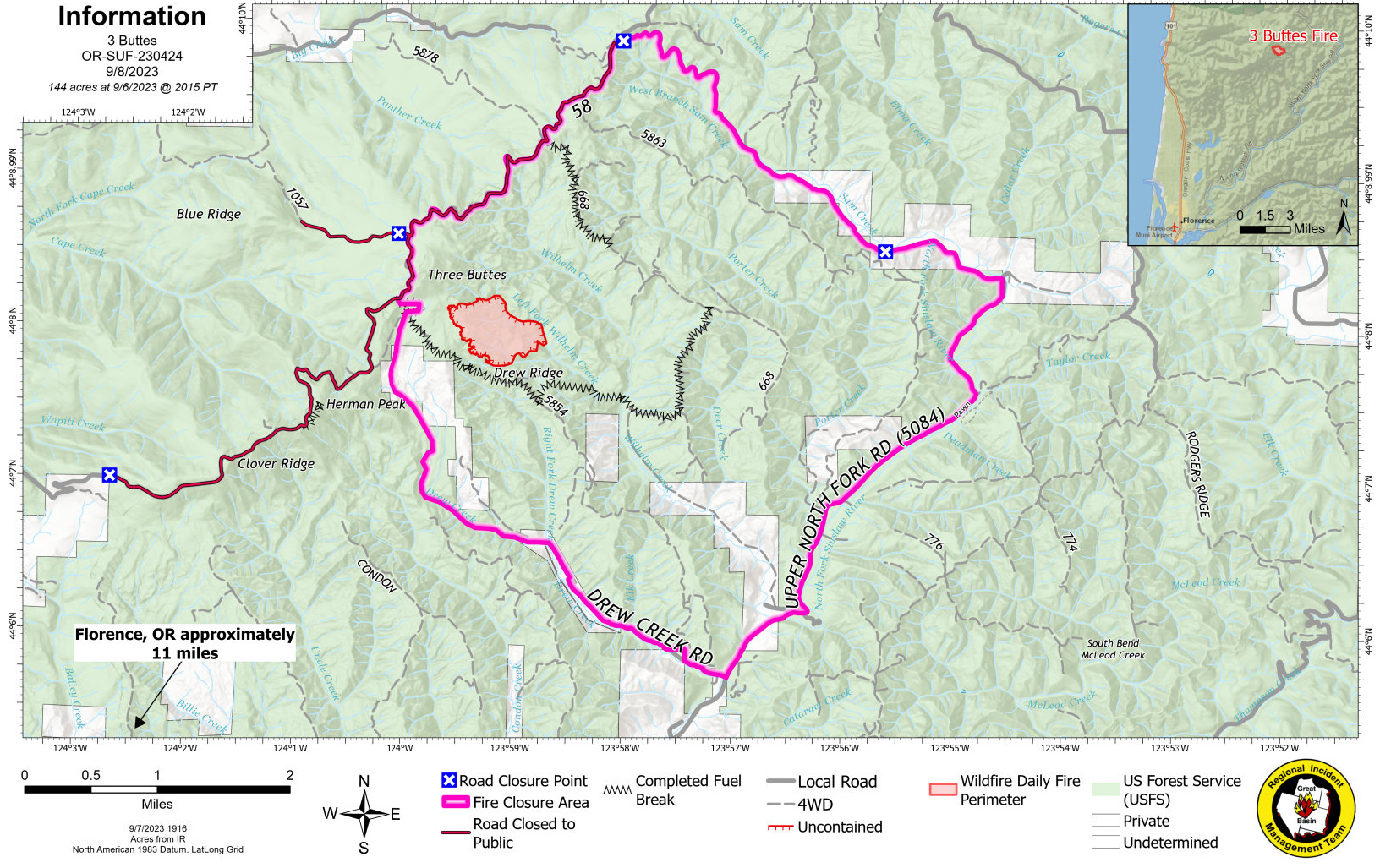
by Will Yurman
On Labor Day, they gathered outside the Florence Events Center at 6:30 a.m. to start their day, just as they had for the previous 10 mornings. “No changes to containment. No changes to our incident objectives at this time,” a member of the command team announced over the portable loudspeaker. The weather forecast was for higher humidity and a mix of clouds and sun. The daily briefing included thanks for their hard work, and most of all, reminders to stay safe.
The Three Buttes Fire was first reported on August 25th. It was contained to 144 acres in the Siuslaw National Forest 15 miles northeast of Florence. The area is rugged with steep hills that limit access for heavy equipment. So Florence is the command center and home base for the team of 170 or so people fighting the fire.
Dozens of tents dot the vacant lots around the events center – home to some of the crew. While others sleep in their rigs, or for a lucky few, a hotel room. They work from 6:30 in the morning until evening each day, returning to town to eat dinner, and sleep. By law, they can work up to 14 days straight before they are required to take a day off.
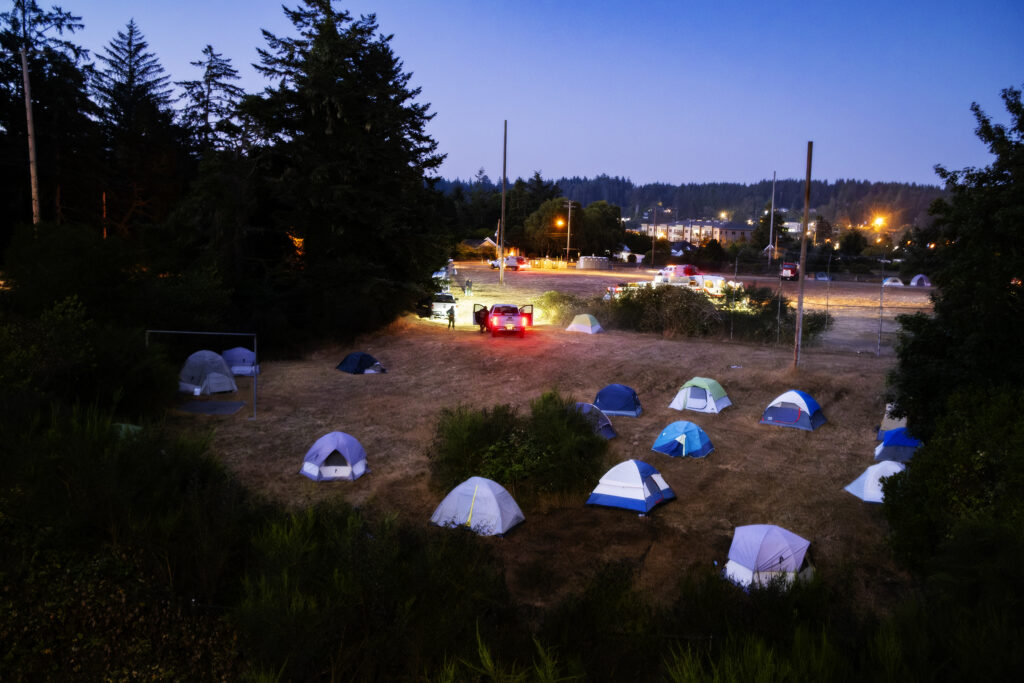
“Home is where I lay my head when I’m on a fire,” Matt Grimes, one of three division leaders on the team said. His home for this deployment is a cot in his rig. The 34-year-old Goshen local was 19 in 2009 when he left a job in the parts and service department at Sears to fight wildfires. He is now a full-time forest officer in the Oregon Department of Forestry in Veneta.
Fighting wildfires has evolved well beyond the days of denim and flannel-wearing firefighters bravely but often blindly striding into a fire.
The teams are organized and coordinated by an Incident Command Structure with strict systems in place. The commanders rely heavily on internet access to give them real-time access to conditions on the ground. Another benefit of setting up in town.
Will Burks is an Incident Commander trainee working Three Buttes. Fighting a fire is about balancing the conditions unique to each fire against the goals and objectives, he said.
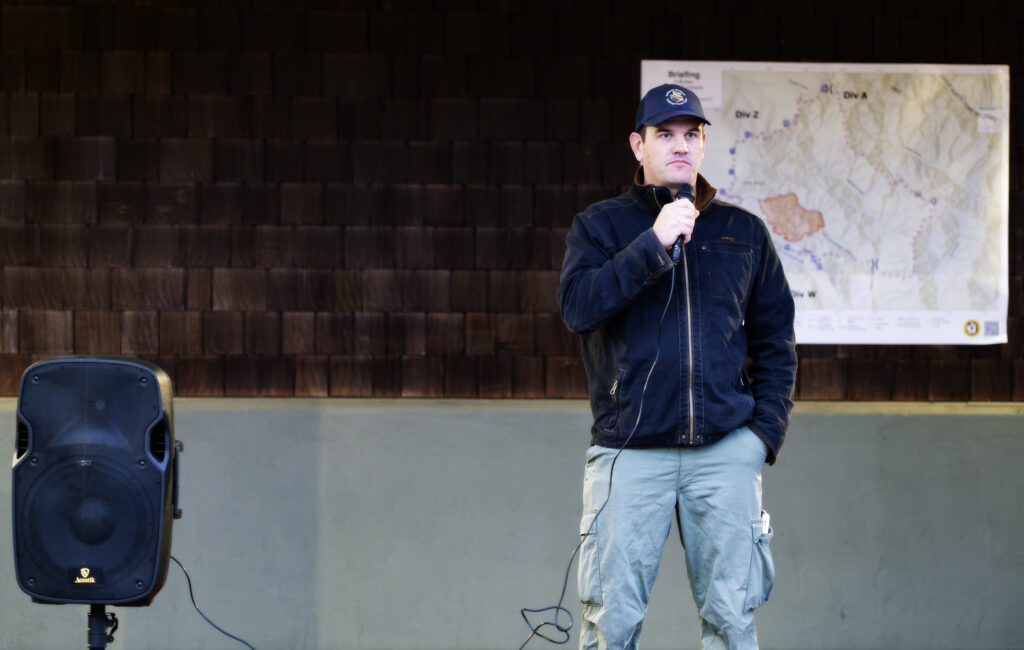
“I think about my career in fire and I think this job chose me as much as I chose it.
I love the forest and all the values that come with our public land”
~ Will Burks
For this fire, the terrain has made access difficult and risky. So the strategy has been to use existing National Forest and logging roads to encircle the fire. Then the crews clear brush and trees on either side of the roads to widen these control lines.
The ultimate objective is to contain and extinguish the fire of course. But it is balanced against concerns for the safety of the team, as well as protecting the ecosystem. Three Buttes is steep terrain and home to old-growth trees and endangered species. All of this is considered as the strategies and tactics for fighting the fire are planned and weighed and adjusted, Burks said.
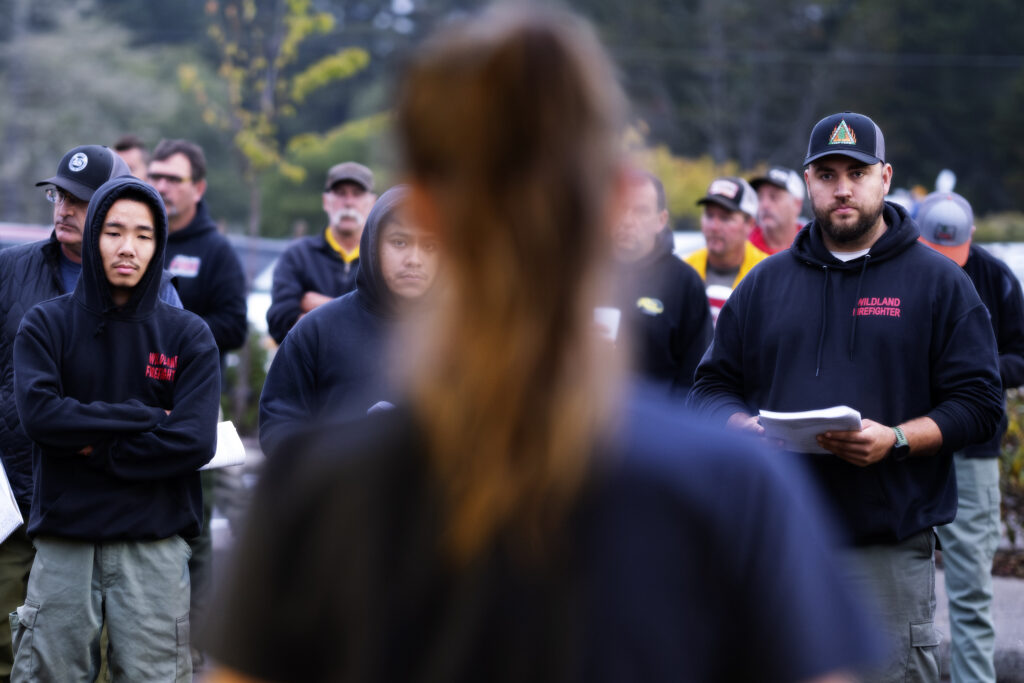
This is a late-season fire, with cooler and wetter weather on the horizon. That plays into the decision-making as well.
“I would say it’s almost like the stock exchange. You’re trying to predict what the stock’s going to do before it moves,” Grimes said when asked to describe the process of fighting a wildfire.
He leaned into the metaphor with something he heard on a podcast about stock trading. “When it moves fast, go slow and sit and wait and watch it and see what’s going to happen. And then when it goes slow, go fast. So take advantage of the slow time,” he said, paraphrasing the lesson.
“There’s a time and a place to go fast even when the fire is going fast. But a lot of times your situational awareness really needs to be up and you need to be paying attention to a lot of stuff all at once.”
For Grimes, the best part of the job is the community. You need to be, as he described it with a laugh, “a very interesting individual to do this job really long term.”
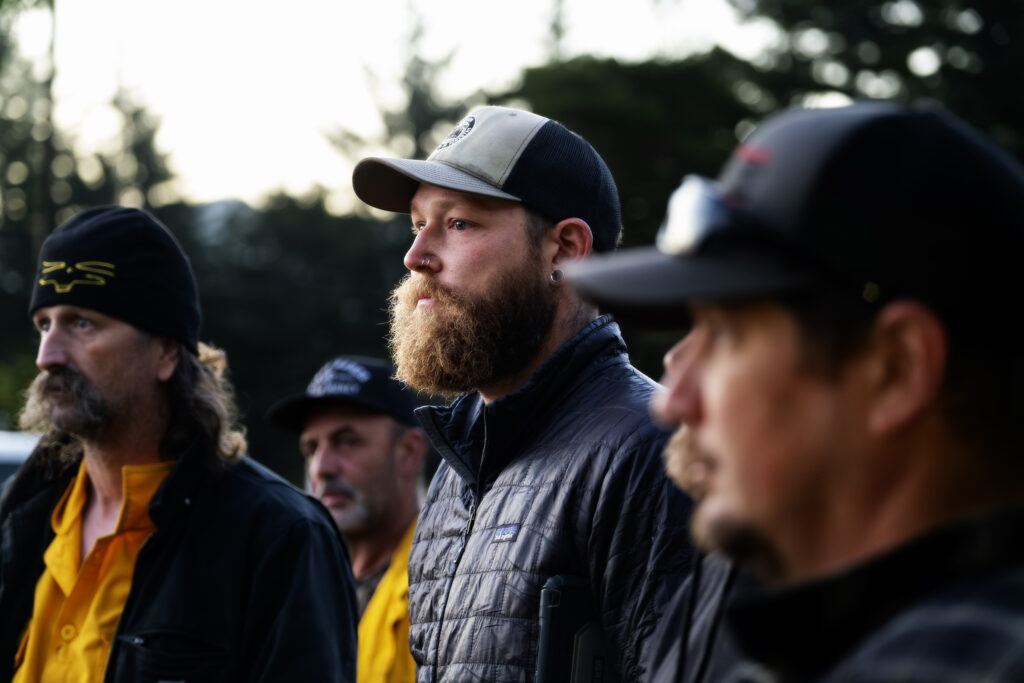
He likes the work, the sense of doing good and caring for the forest but he kept coming back to the teamwork and community of firefighters. “We all have kind of an overall objective. We all work in the forest and we all want to come back safe and accomplished at the end of the day. And there’s days where we get beat up and we’re defeated and that sort of thing. But really, when everybody’s working together as a community and as a team: fires will go out.”
Edits: The Forest Service map was updated with a version that is more complete

Thanks for the inside story. They were very open to your questions. That shows they trust your integrity.
Thanks, Patti. They were great to talk to and very generous with their time in the middle of fighting the fire.